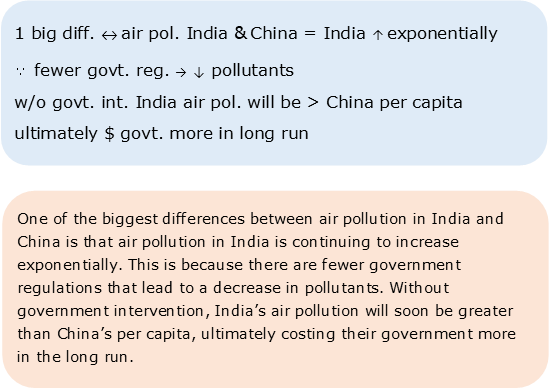Do abbreviations and symbols benefit notetaking?

This is the third and final chapter about Notetaking. To complete this reader, read each chapter carefully and then unlock and complete our materials to check your understanding.
– Review the concept of notetaking in academic contexts
– Discuss the difference between symbols and abbreviations and how they’re helpful for notetaking skills
– Study the most common notetaking symbols and abbreviations available to students
Before you begin reading...
-
video and audio texts
-
knowledge checks and quizzes
-
skills practices, tasks and assignments
Chapter 3

Having now explored the benefits of notetaking and the five different notetaking methods available to students, this third and final chapter on the subject explores how we can use symbols and abbreviations to increase the speed at which we take notes. Seeing as notetaking is often done under pressure and time restraints, such as when listening to a lecture or skim reading an article, techniques for increasing efficiency when notetaking such as this are often very welcome.
Review: Notetaking Methods
In Chapters 1 and 2, we discussed how notetaking:
- is the act of writing down the ideas, arguments or evidence you encounter
- may include summaries, bullet points, diagrams and images
- improves language skills, increases knowledge, benefits memory and develops paraphrasing
- is useful in lectures and seminars and other more informal study environments
- may include mind maps, margin notes, highlighting, Cornell notes and research logs
How are symbols and abbreviations helpful?
When taking notes, it can be very challenging to write down everything you need to at the speed of the speaker. Watch a video at home and you can slow that video down or pause it as many times as you like, but take notes in a live setting such as a seminar or lecture and you may find that you’ve forever missed some critical information simply because you couldn’t type or write fast enough.

One proven way of improving the speed at which you take notes is via the use of symbols and abbreviations. Symbols such as ‘=’ (equals), ‘>’ (greater than) or ‘£’ (pound) and abbreviations like ‘etc.’ (and so on), ‘e.g.’ (for example) and ‘w/o’ (without) can be much quicker to write than their full, unabbreviated forms. However, one warning when using symbols and abbreviations is that you must remember the meaning of the shorthand you choose. There’s nothing worse than returning to your notes a few days or weeks later and finding that you can’t understand much of what you originally wrote. Take the example below: Without knowing the meaning of the following symbols, could you understand what’s being expressed? Try reading the shorthand version first before reading the same in full:

Which symbols and abbreviations are best?
To help you improve the speed at which you take notes, we’ve included some of the most helpful and common academic symbols and abbreviations below. Practice using these in your own writing to speed up your notetaking skills:
↔ (between)
→ (lead to) ← (caused by)
↑ (increase) ↑↑ (rapid increase) ↓ (decrease)
= (equals) ≈ (approximately) ≠ (does not equal)
> (greater than) < (less than)
$ (currency; dollars) £ (pounds) # (number)
✓ (yes) ✓✓ (definitely)
∴ (therefore) ∵ (because)
w/ (with) w/o (without) c/o (care of)
etc. (etcetera; and so on) e.g. (for example) i.e. (that is)
est. (established) govt. (government) info (information)
approx. (approximately) diff. (difference) max. (maximum)
ASAP (as soon as possible) ETA (estimated time of arrival)
Great work on completing this short reader on notetaking. Now that we’ve discussed what notetaking is, the five methods of notetaking, and how to use symbols and abbreviations to quicken your shorthand, you might now wish to complete our chapter worksheets to check your understanding. Then perhaps consider completing another reader on the topic of study skills.
Downloadables
Once you’ve completed all three chapters in this short reader about Notetaking, you might then wish to download our Chapter Worksheets to check your progress or print for your students. These professional PDF worksheets can be easily accessed for only a few Academic Marks.
Chapter 1 explores the topic: Why are notetaking skills important at university? Our Chapter 1 Worksheet (containing guidance, activities and answer keys) can be accessed here at the click of a button.
Chapter 2 explores the topic: Which 5 academic notetaking methods are best? Our Chapter 2 Worksheet (containing guidance, activities and answer keys) can be accessed here at the click of a button.
Chapter 3 explores the topic: Do abbreviations and symbols benefit notetaking? Our Chapter 3 Worksheet (containing guidance, activities and answer keys) can be accessed here at the click of a button.
To save yourself 2 Marks, click on the button below to gain unlimited access to all of our Notetaking Chapter Worksheets. This All-in-1 Pack includes every chapter, activity and answer key related to this topic in one handy and professional PDF.
Collect Academic Marks
-
100 Marks for joining
-
25 Marks for daily e-learning
-
100-200 for feedback/testimonials
-
100-500 for referring your colleages/friends